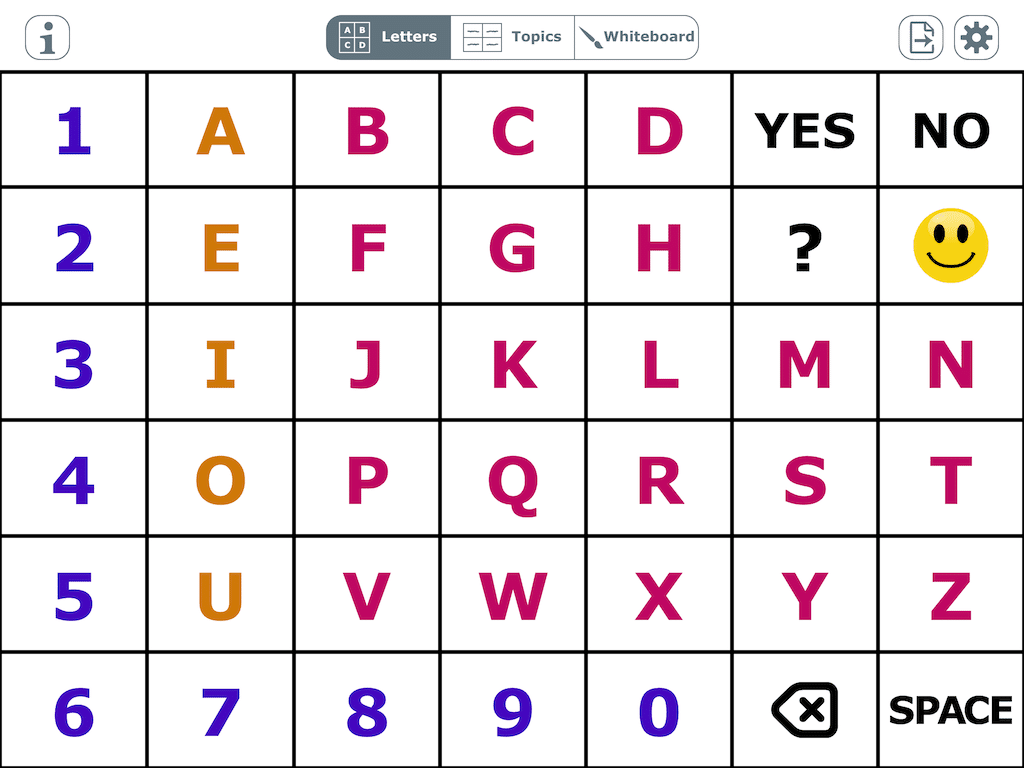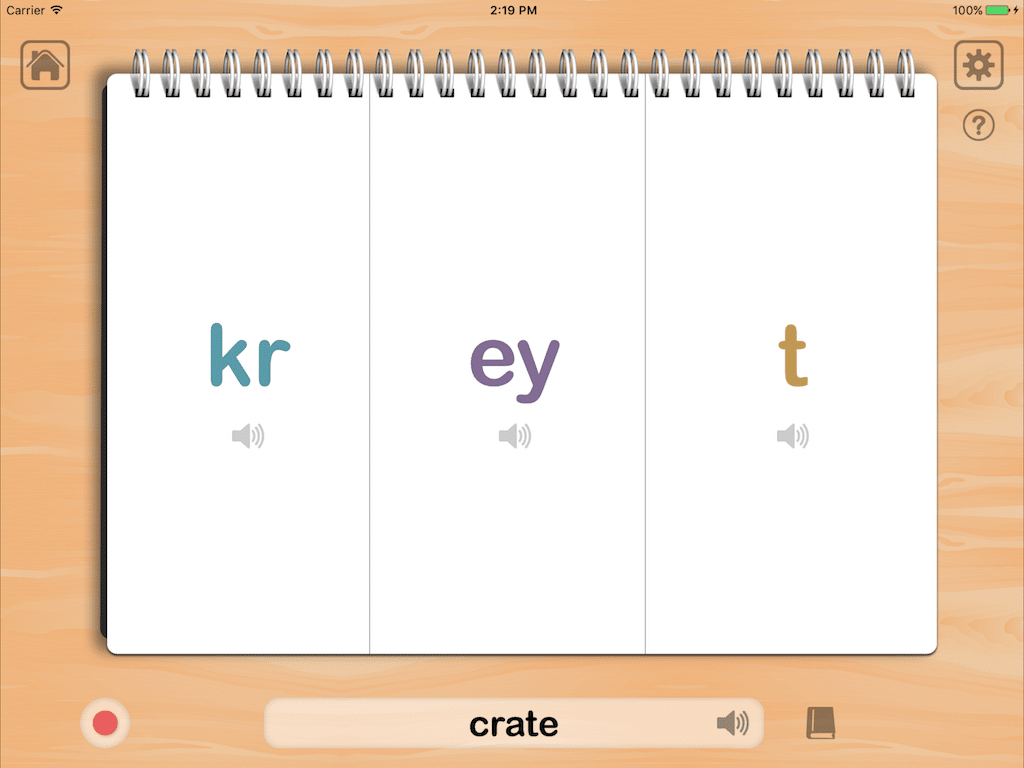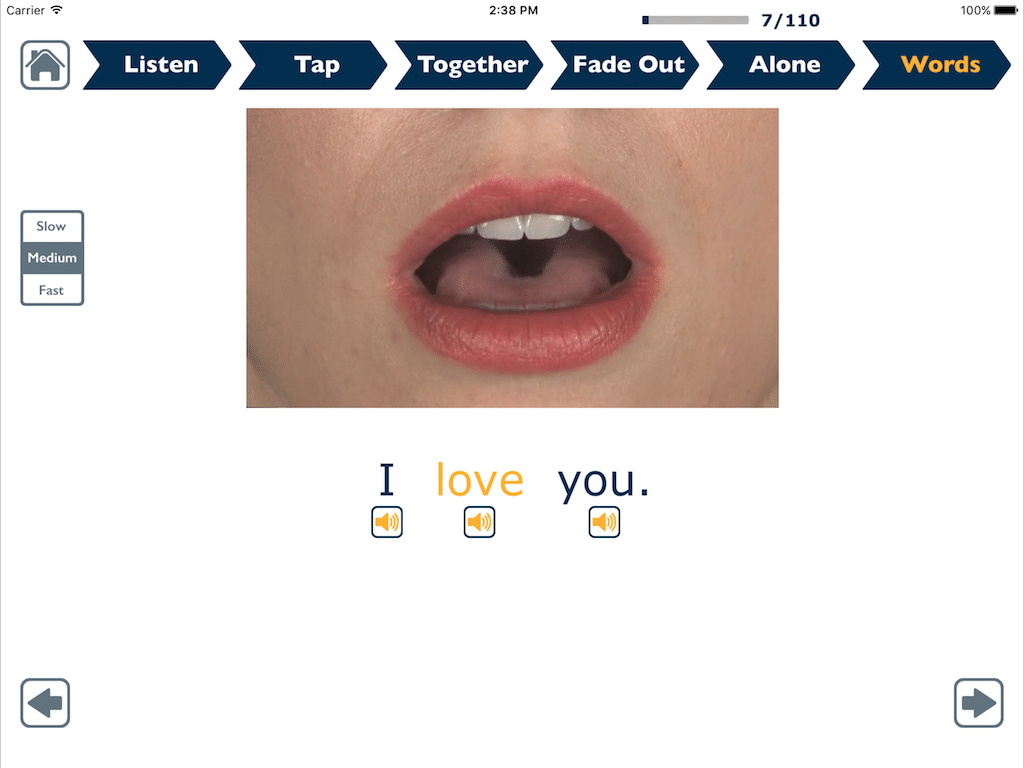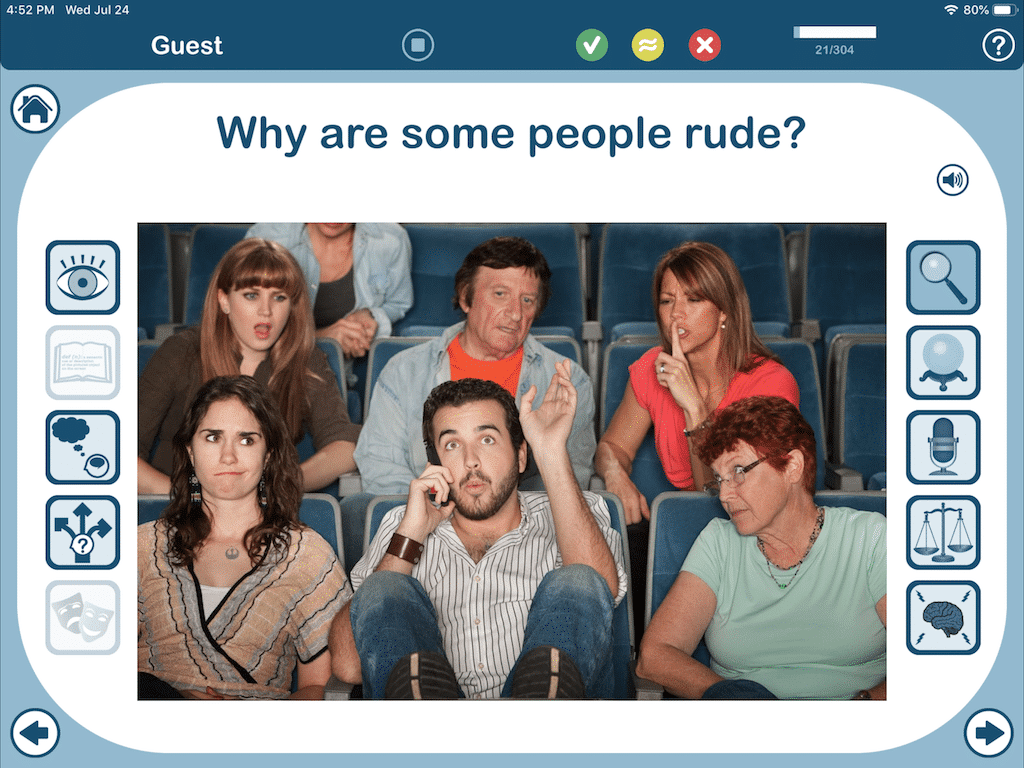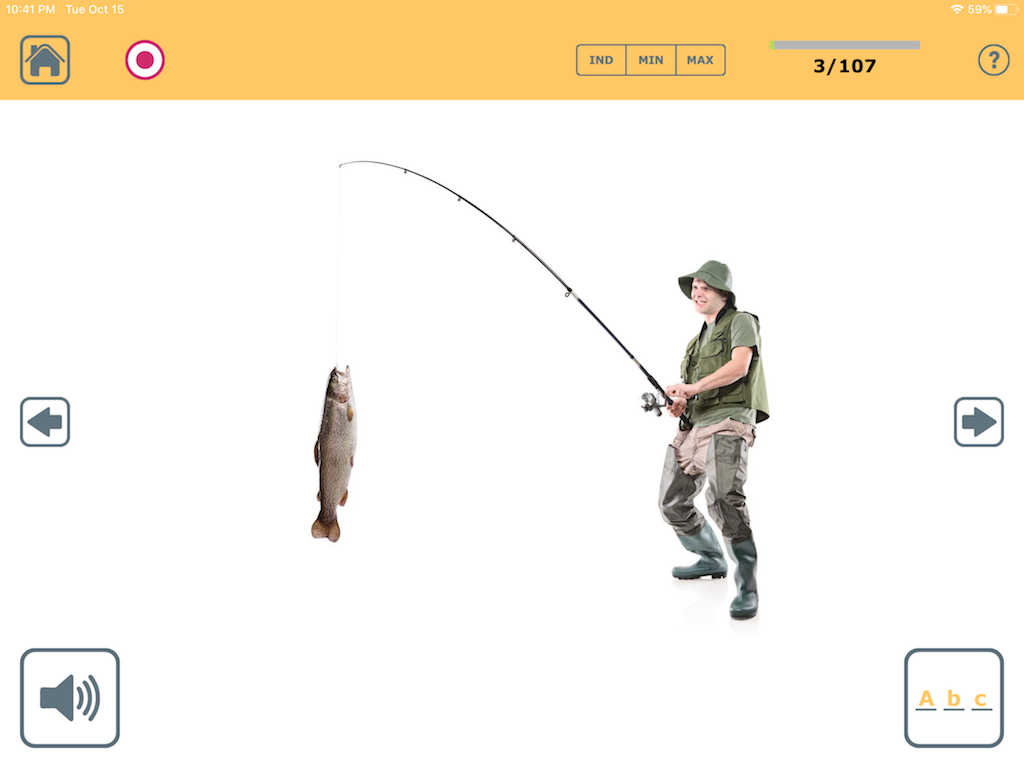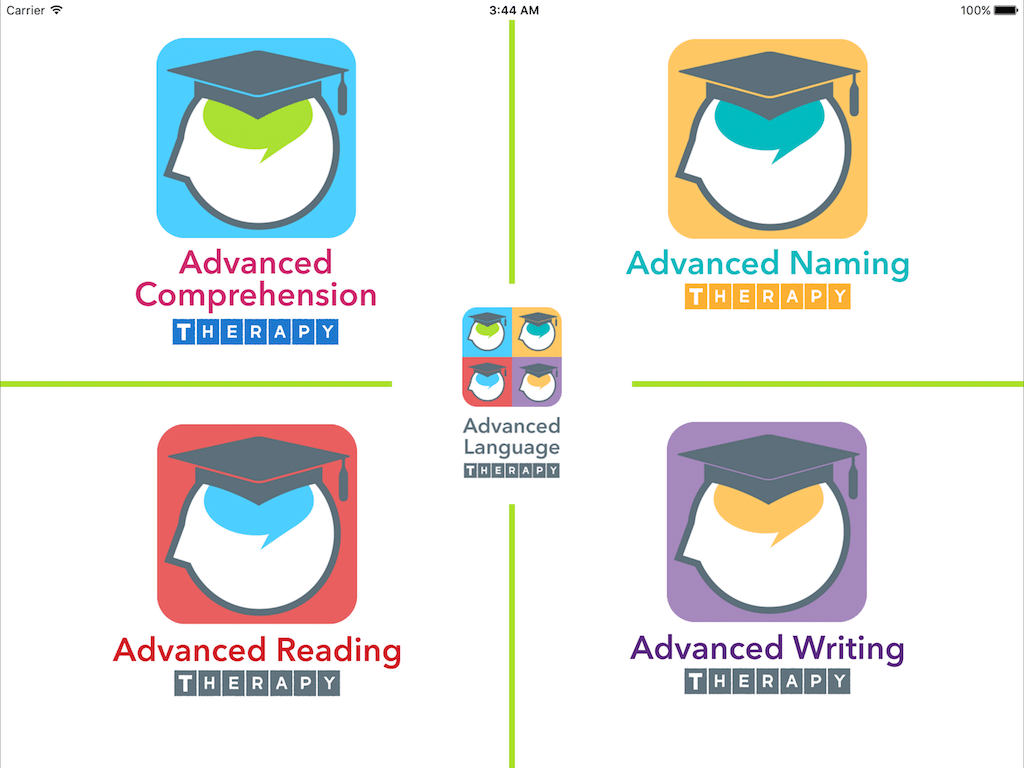Using Speech Therapy Apps to Treat Dysarthria: Slurred Speech in Adults
6 min read
Everyone wants to be heard, but what if when you spoke, nobody could understand? This is the reality for millions of people with a motor speech problem called dysarthria that causes slurred or unclear speech. Speech therapy can help, and apps can be an important part of speech recovery.
Severe speech problems can fully prevent communication, while more mild ones can negatively influence how the speaker is perceived by others. There is a whole spectrum of difficulties in between these extremes, but each person impacted by dysarthria deserves a chance to improve. Through carefully selected exercises and strategies, awareness-building, and self-monitoring, communication can become clearer, easier, and more precise.
So for those of you trying to help yourself, a client, or a loved one to regain their speech clarity, here’s the progression we recommend when using our apps.
1) AlphaTopics AAC
When speech is severely affected and is hard to understand, the most effective tool is something called speech supplementation. This means pointing to the first letter or letters of each word as it’s being said. Not only does this technique have a ton of research showing it’s effective to help the listener understand better, it also actually improves speech! Part of the magic is in slowing down. Another key benefit is how it improves the listener’s opinion of the speaker, revealing that they are competent and should be listened to.
Read more about speech supplementation and why it’s so effective for dysarthria therapy.
AlphaTopics AAC is an app with 3 ways to supplement speech and many options to customize the experience. The Letters board can be used by the speaker to point, or it can be used by the listener as a tool for scanning. The letters can be arranged alphabetically or by frequency. It often helps to establish the topic first, which can be done using the 12 or 24 popular topics built into the Topics board, or by customizing these slots with topics that are meaningful to the speaker. And when speech fails, writing or drawing on the Whiteboard is sure to help.
2) Speech FlipBook
Once speech starts to come out, it may not be entirely clear. This is when we start working on differentiating vowel sounds from one another, and on clearing up the articulation of consonants. To do this, we usually start with vowels (V) like “ah”, and then move on to consonant-vowel (CV) combinations as in “ma”, and then up to consonant-vowel-consonant (CVC) words, such as “mall”. We then start to combine consonant sounds into clusters or blends of 2 or 3 sounds (CC, CCC) either before (CCV) or after the vowel (VCC), into words like “small” or “malt.”
Coming up with all the words that have the sounds we need to practice in just the right spot can be challenging, but Speech FlipBook makes it easy. With 5 tabs filled with all the sounds in English in each position of the word, you can create over 2,300 single-syllable words that fit your needs. Touch each sound to hear it, then blend them together into the word. Record yourself to compare to the model, and decide what you’re going to do differently next time to make your speech clearer (e.g. talk slower, make the first sound crisper, speak louder).
3) Apraxia Therapy
Once you’ve mastered the individual sounds that make up words, it’s time to move on to phrases. Apraxia Therapy gives you a video model of 110 everyday functional Phrases to speak along with in unison. You’ll match the slow, rhythmic rate that increases clarity while the app records your speech and plays it back for you to judge. Select only the steps you need to practice, and set the rate to meet your needs for dysarthria therapy.
For more advanced users, the Long Words activity helps you break down tricky 2-5 syllable words into segments, making them clearer. Try the Sequences activity to work on breath timing to ensure you have enough air to make it through to the end.
4) Conversation Therapy
Saying a sentence clearly is one thing, but having to think of that sentence and then say it clearly is another task altogether. Conversation Therapy allows people with dysarthria a chance to practice speaking in sentences in response to questions about a topic of interest to them. Pick from 10 question types about over 275 topics in this app that won’t take just yes or no for an answer.
Practice with a partner or record yourself to listen back. Add to your therapy by first reading the question aloud, then formulating your response. Scoring is optional, but should be used based on whether you used your clear speech strategies or spoke intelligibly, not whether the answer was correct.
Want more apps for speech?
Most of our apps can be used for more than one skill. While these apps aren’t designed with speech as the primary goal, they can be used by people looking to improve their clarity as part of a comprehensive dysarthria therapy plan.
Bonus App 1) Naming Therapy
While Naming Therapy was designed to help people with aphasia think of the words, it can also be used to help people with dysarthria to say the words clearly. Use the Flashcards activity and select words by syllable length or by first letter (choose which words you want through the settings). You can also add your own words and photos to the app, allowing you to practice saying the words that matter most to you.
Bonus App 2) Advanced Language Therapy
There are 4 unique apps contained in Advanced Language Therapy, and each can be used to help people with dysarthria. Here’s how:
Advanced Naming Therapy
All of the activities in Advanced Naming Therapy require a verbal response after careful thought, so it can be used much like Conversation Therapy. On-screen recording is available for self-analysis. The time pressure of the Generate activity can add a challenge. Use the Describe pictures as a barrier task to tell someone who can’t see the picture what’s in it. The Compare activity requires a lot of careful thought, adding organizational demands to the answer before it is spoken.
Advanced Reading Therapy
Reading aloud removes the pressure to think of what to say, but the quantity of words is greater and vocabulary is more diverse. Read each passage in Advanced Reading Therapy aloud before answering the comprehension questions, focusing on rate, volume, breath, and diction when speaking. On-screen recording is available so you can listen to yourself read after the fact.
Advanced Comprehension Therapy
Read each sentence or direction aloud as clearly as you can before tapping the answer in Advanced Comprehension Therapy. To add a memory component to the task, repeat what you hear using the Listen mode, with no text on the screen to read. Now you’ll have to both remember and speak clearly!
Advanced Writing Therapy
For those who have not yet recovered their speech to a degree that is functional for conversation, writing may be the best way to communicate. Advanced Writing Therapy works on typing skills at the word, sentence, and paragraph level. Practice typing common text or chat messages or composing simple emails. Typing has several advantages over handwriting as the text can be read aloud by a device or app as alternative and augmentative communication (AAC).
